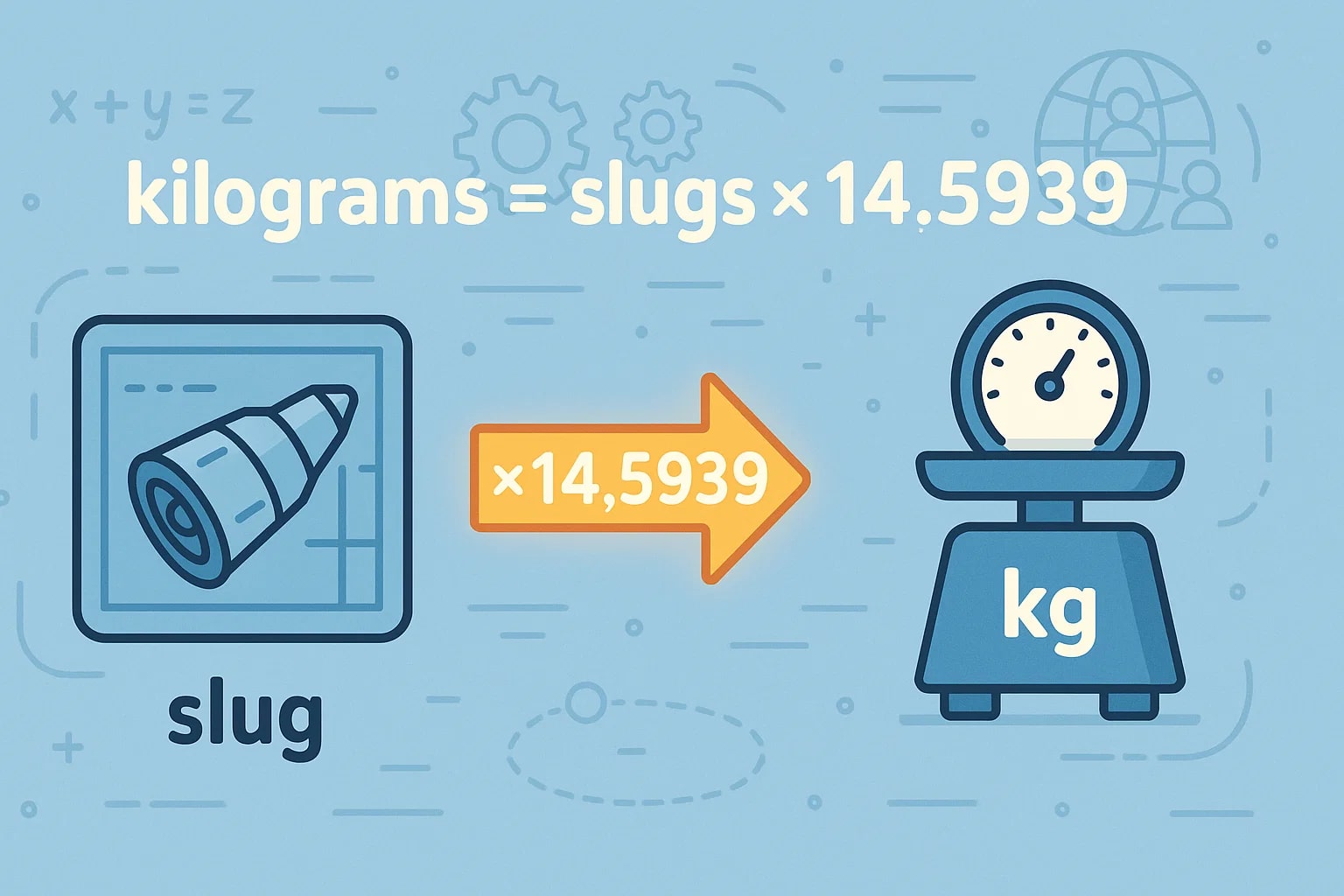slug to kilogram – How to convert slug to kg
The slug is a unit of mass used in the imperial system, while the kilogram is the standard SI unit for mass. Converting between them bridges U.S. customary engineering practices with international standards. One slug equals about 14.5939 kilograms (kg).
What is a slug?
The slug is an imperial unit of mass, defined so that a mass of one slug accelerated at 1 ft/s² produces a force of one pound. This makes it especially practical in engineering and physics when dealing with force and acceleration in U.S. customary units.
1 slug = 32.174 lbm ≈ 14.5939 kg
For perspective, a person with a weight of 160 lb has a mass of about 5 slugs, or 73 kg.
What is a kilogram (kg)?
The kilogram (kg) is the base unit of mass in the International System of Units (SI). It’s defined by the Planck constant, making it one of the most precise units in science.
1 kg = 1 × 10⁰ kg
For everyday comparison, a standard laptop computer weighs about 2 kg, which equals roughly 0.137 slugs.
Conversion Formula
To convert slugs to kilograms, multiply by 14.5939:
1 slug ≈ 14.5939 kg
Example:
10 slugs × 14.5939 = 145.939 kg

Do you know?
-
The slug was introduced in the early 20th century to make Newton’s second law (F = ma) easier to use with pounds and feet.
-
Aerospace engineers once calculated rocket masses in slugs before translating them into kilograms for international collaboration.
-
In auto racing, crash-test simulations may use slug measurements when modeling vehicles in U.S. software systems.
-
The kilogram is now tied to the Planck constant, meaning its definition is based on fundamental physics, not a physical object.
From Apollo Missions to International Labs
During the Apollo era, NASA engineers worked with slugs for spacecraft mass calculations since most systems used U.S. customary units. But when collaborating with international scientists, they had to convert everything into kilograms. A rocket stage that weighed 300 slugs would be listed as about 4 378 kg in mission reports shared with European partners.
This process wasn’t just bookkeeping — it was vital for ensuring consistency across teams. Even today, aerospace companies working on joint projects often perform slug-to-kg conversions to keep engineering standards aligned. The conversion demonstrates how units can bridge cultures, keeping science and technology truly global.

From Imperial to SI
Every 1 slug equals about 14.5939 kg. Though the slug remains a niche unit, converting it to kilograms ensures clarity in international engineering, physics, and aerospace projects.
For quick and reliable results, use our Weight Converter or explore our complete Conversion Tools to manage measurements across any system.

